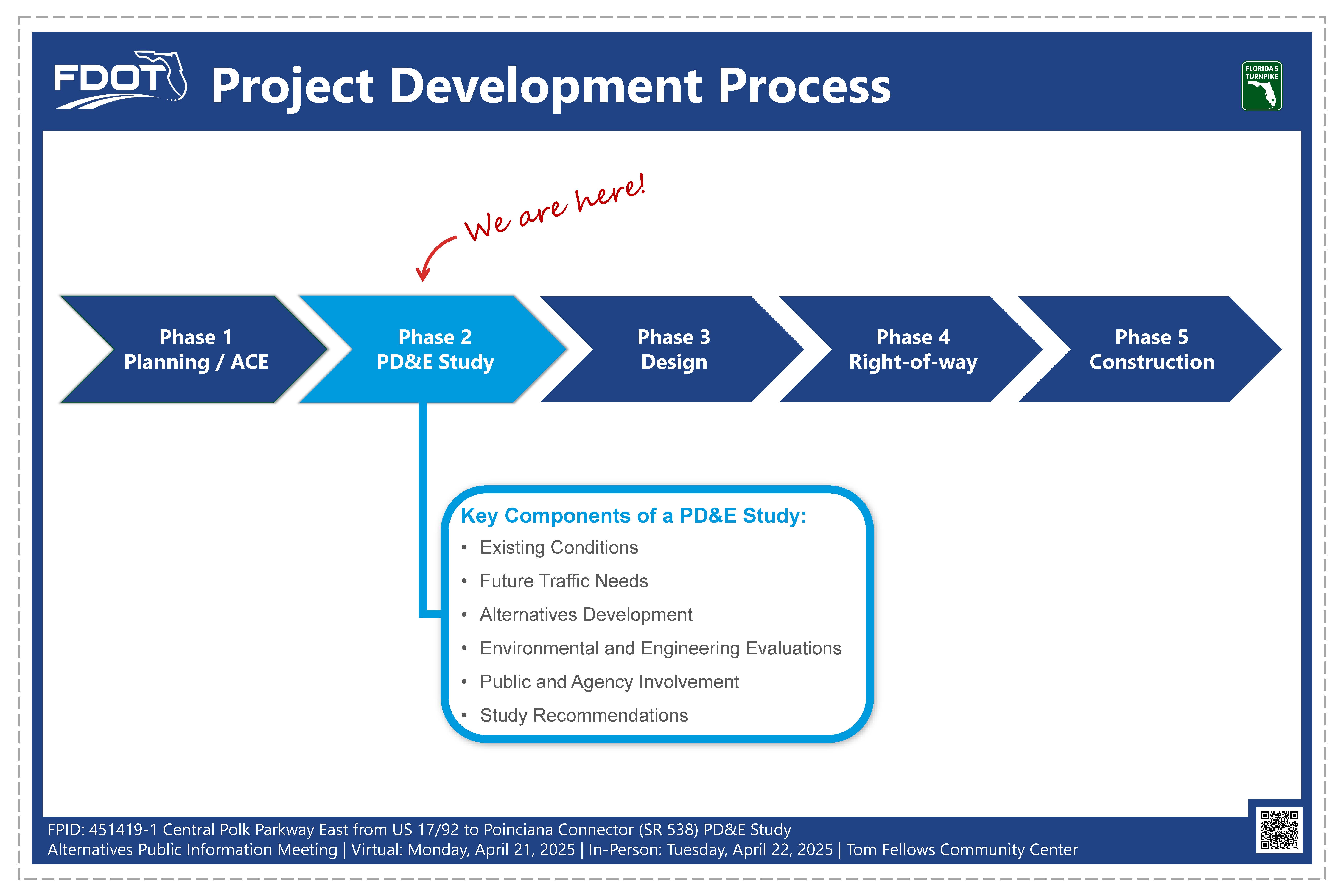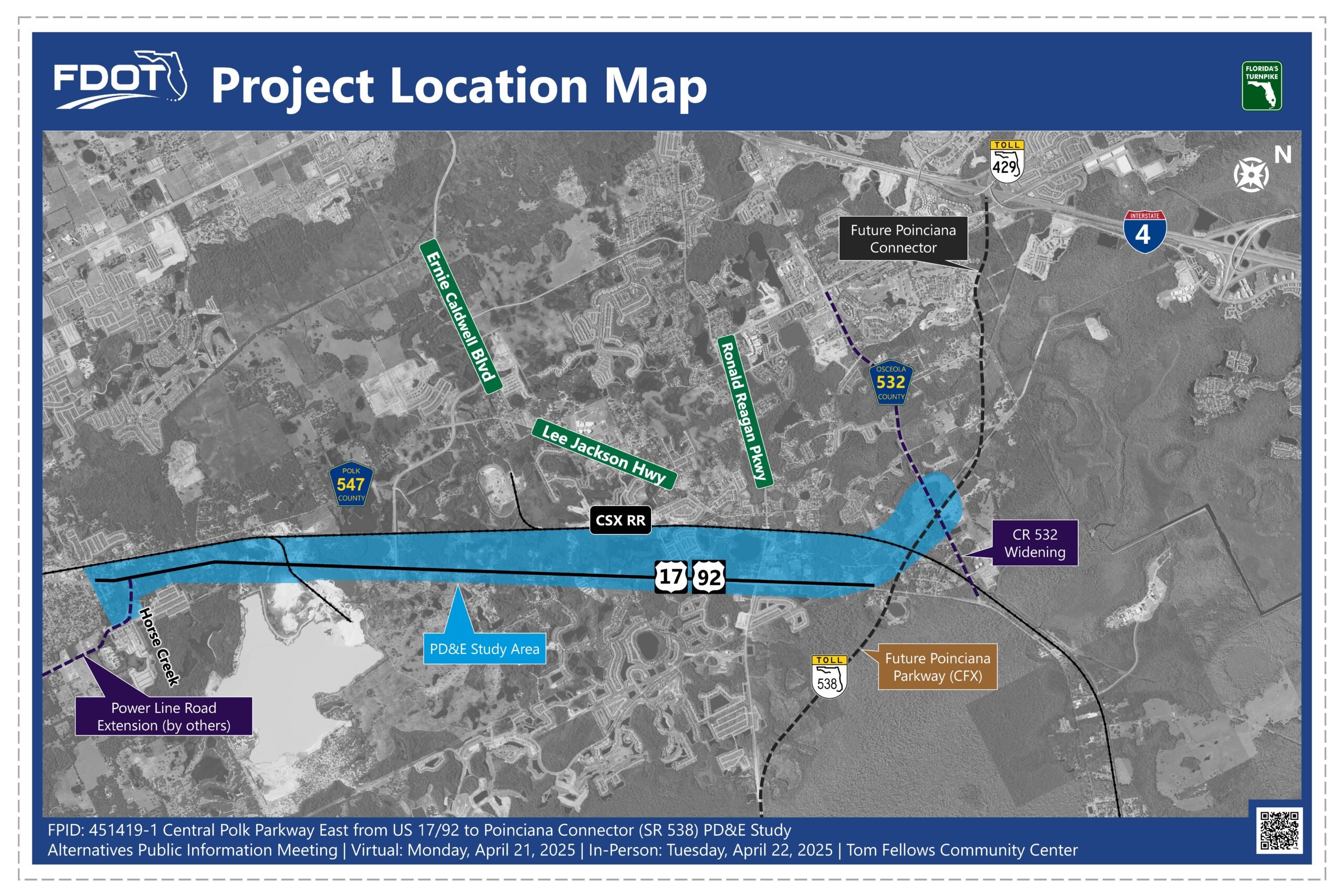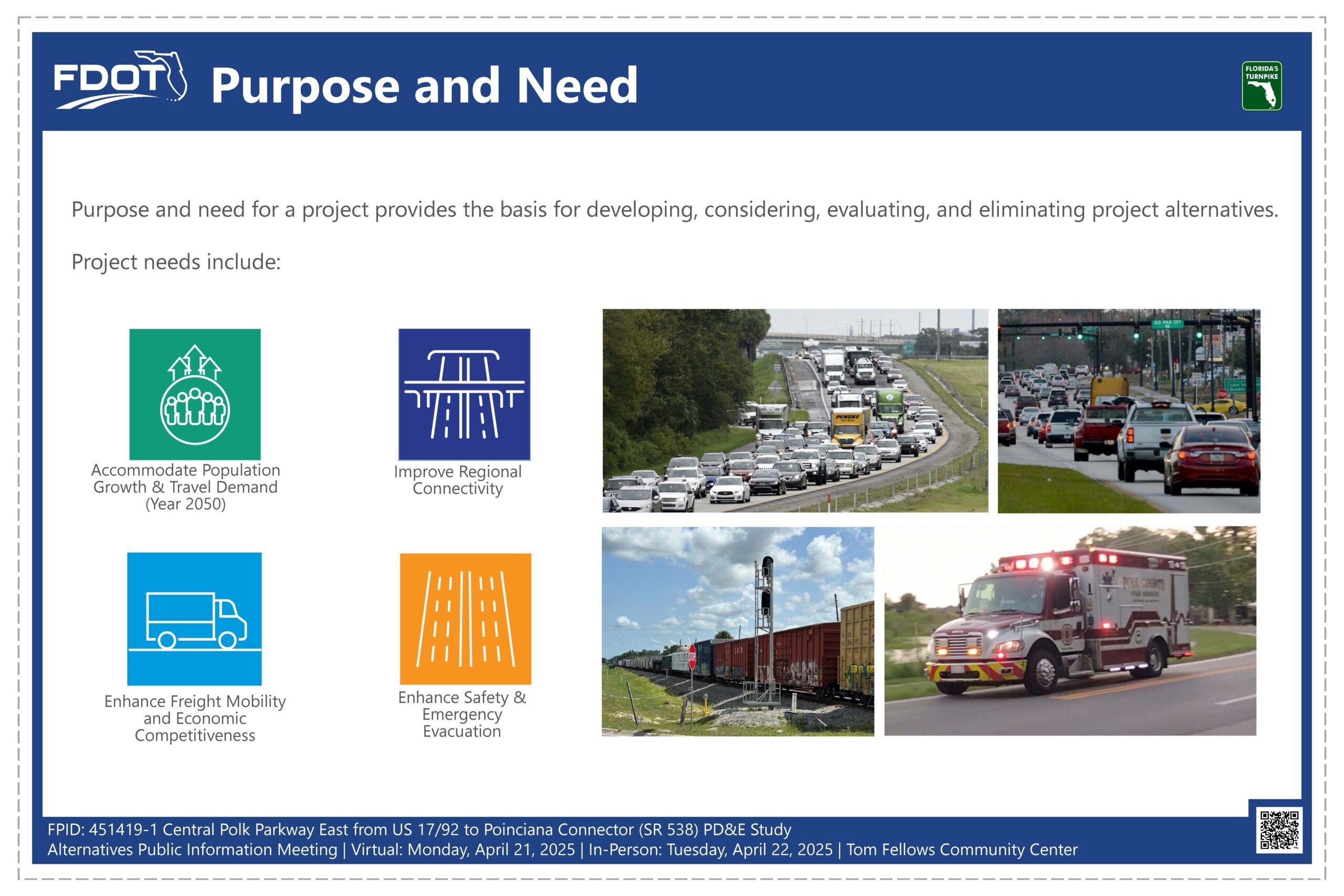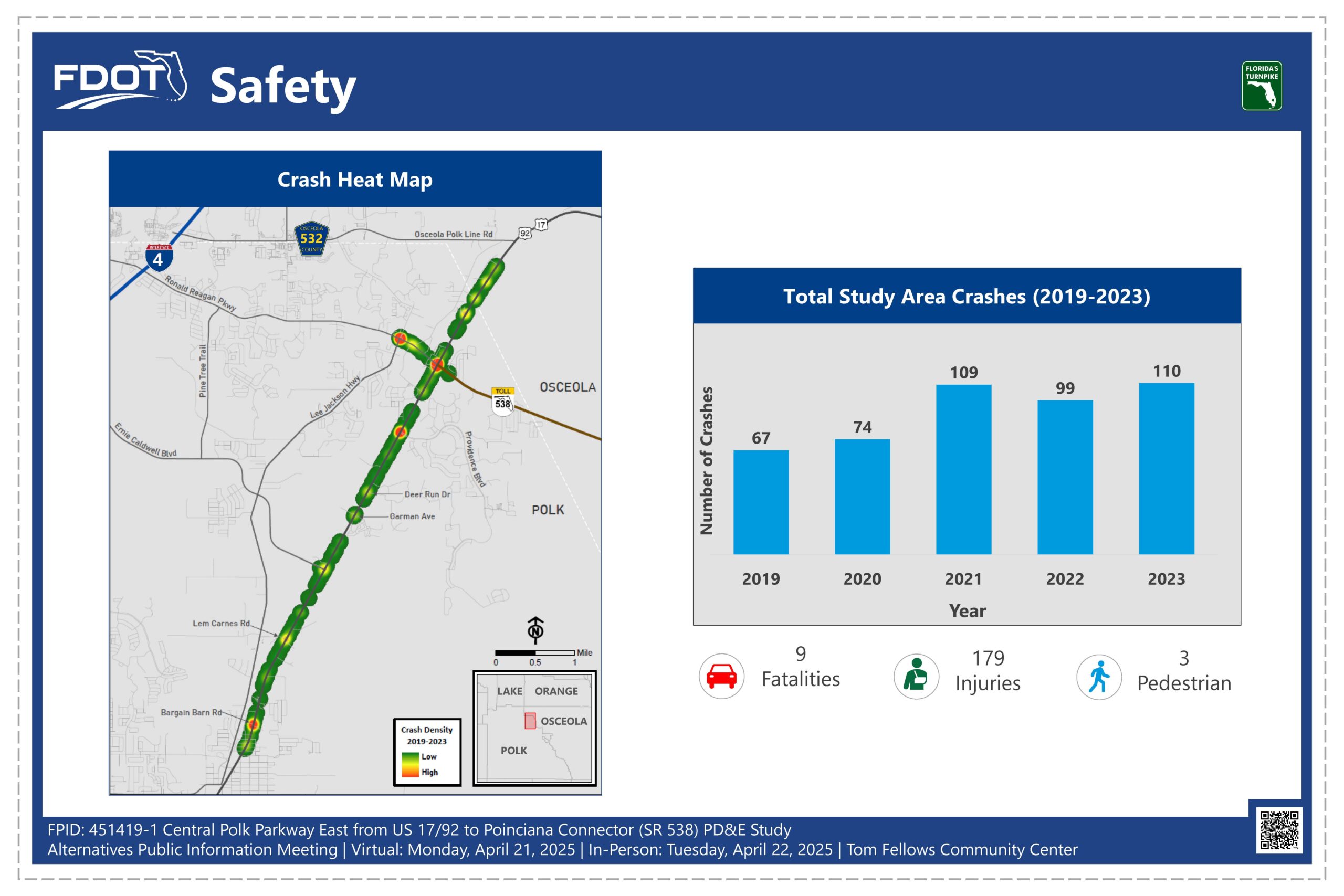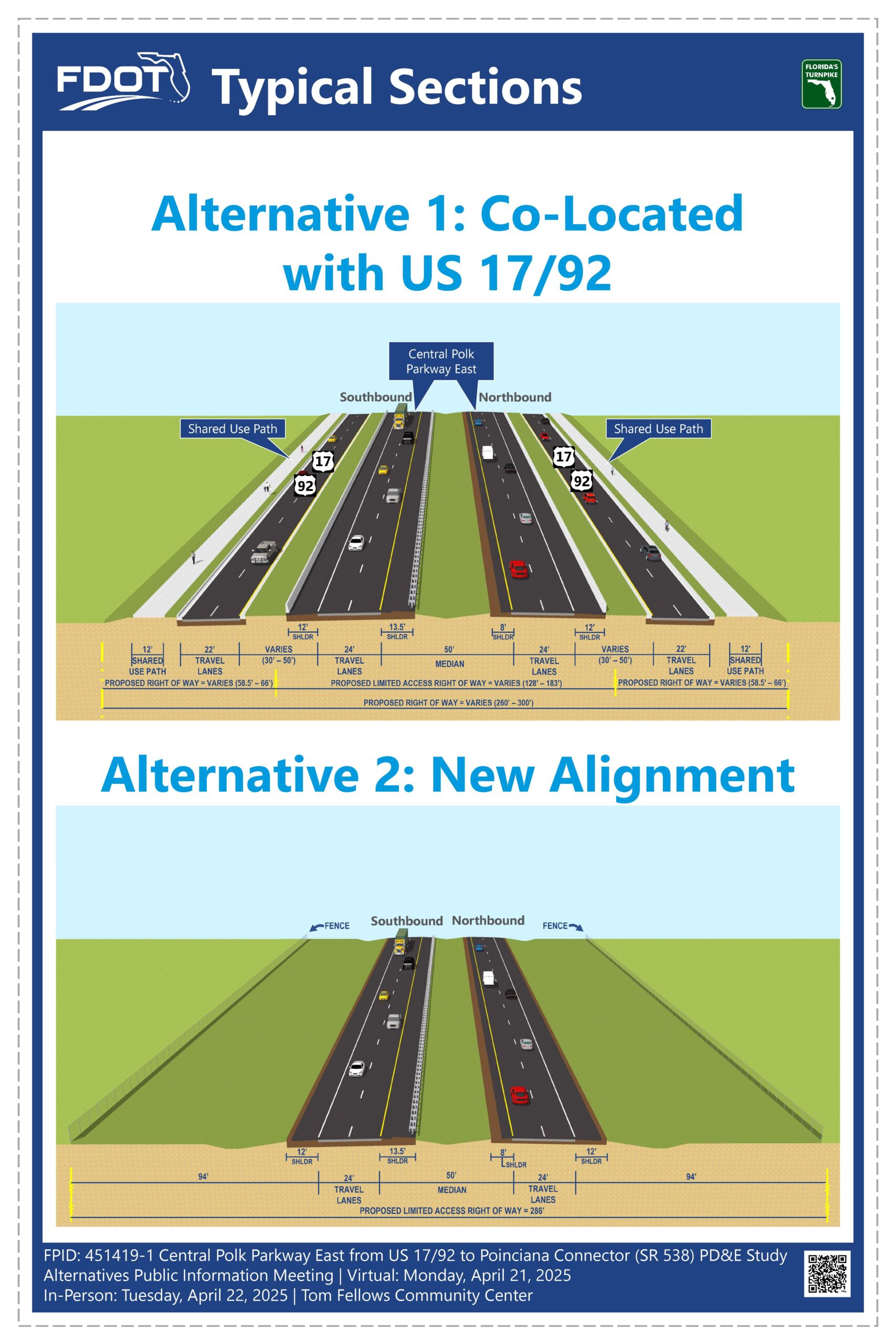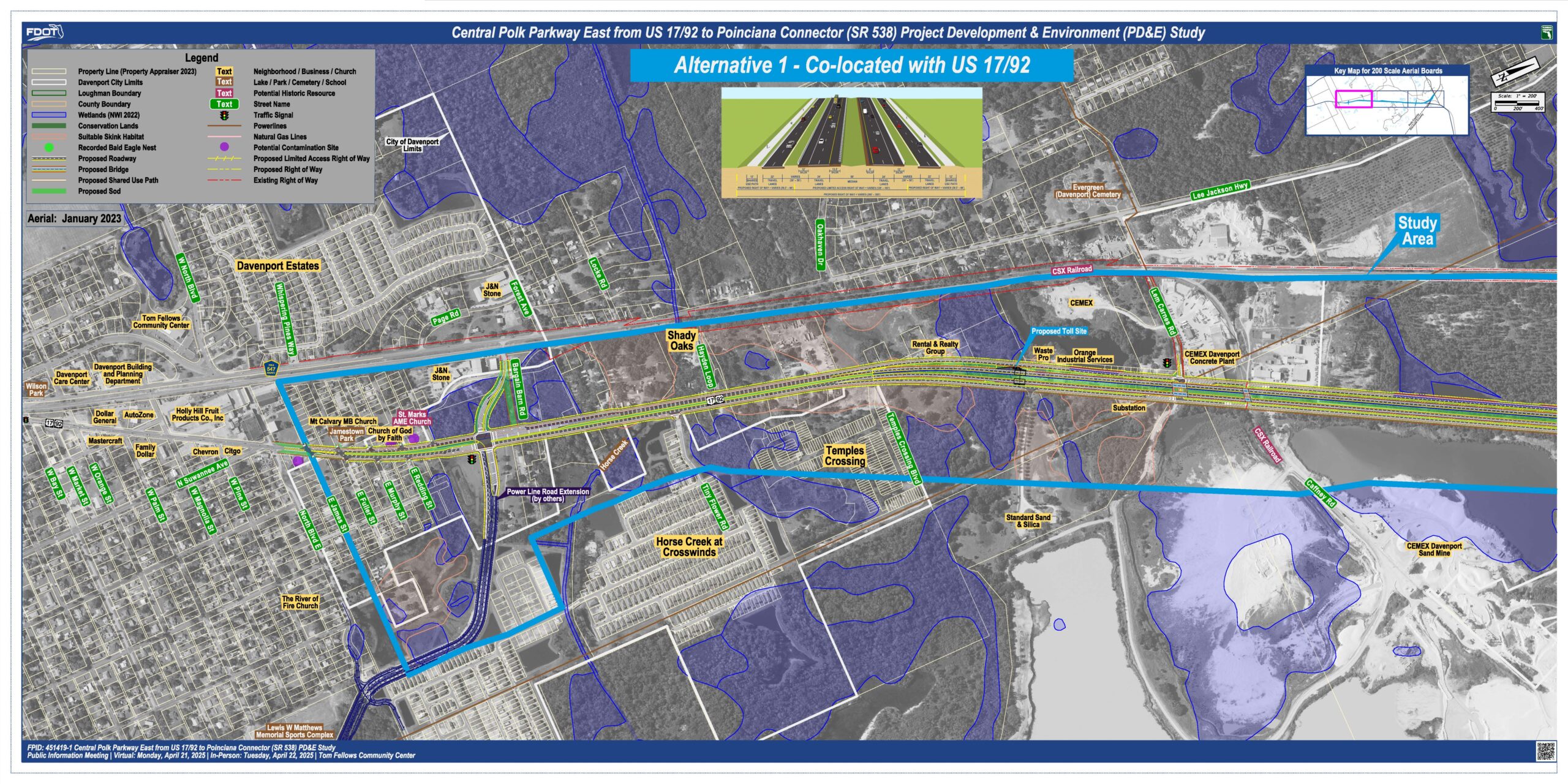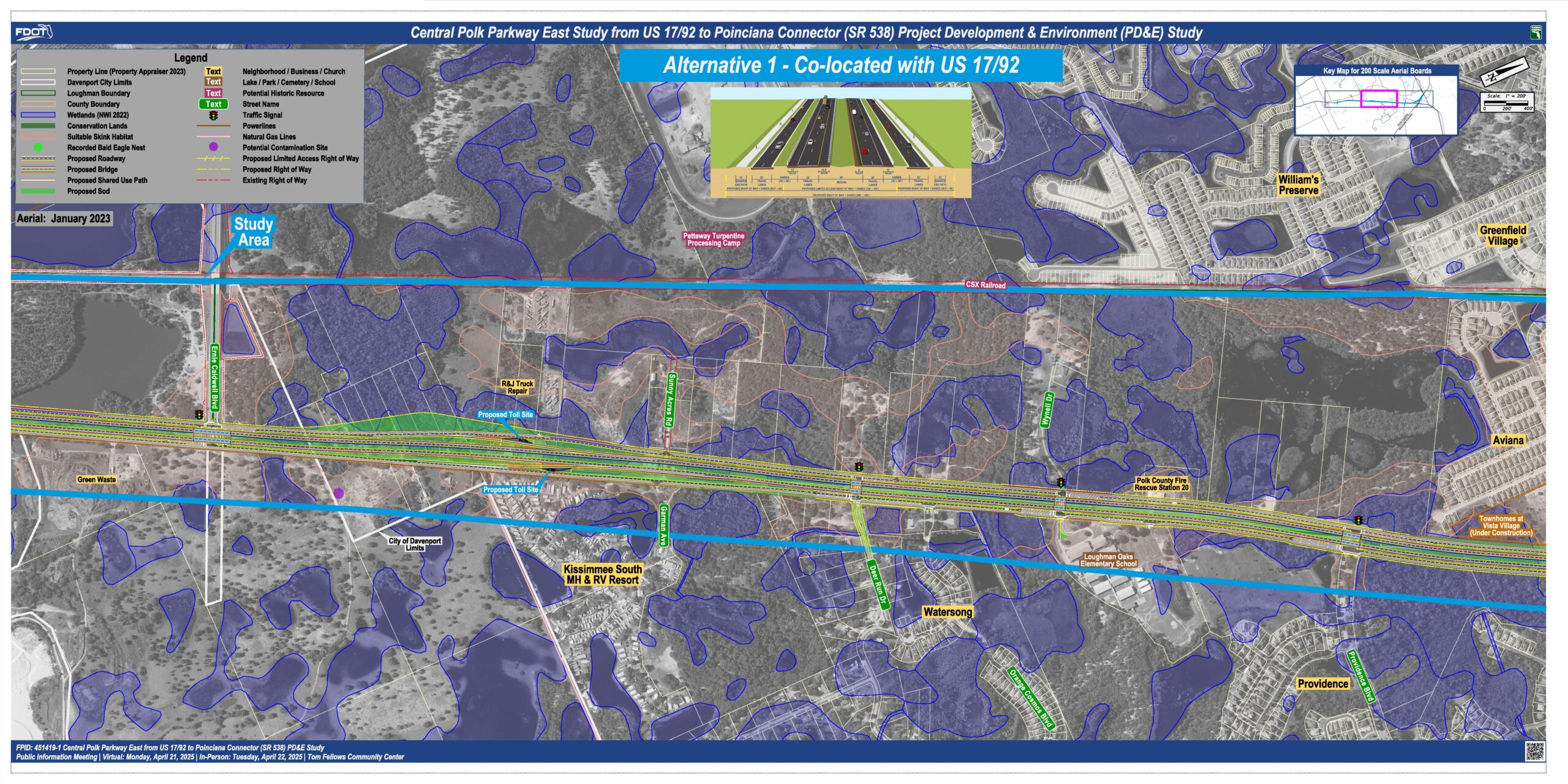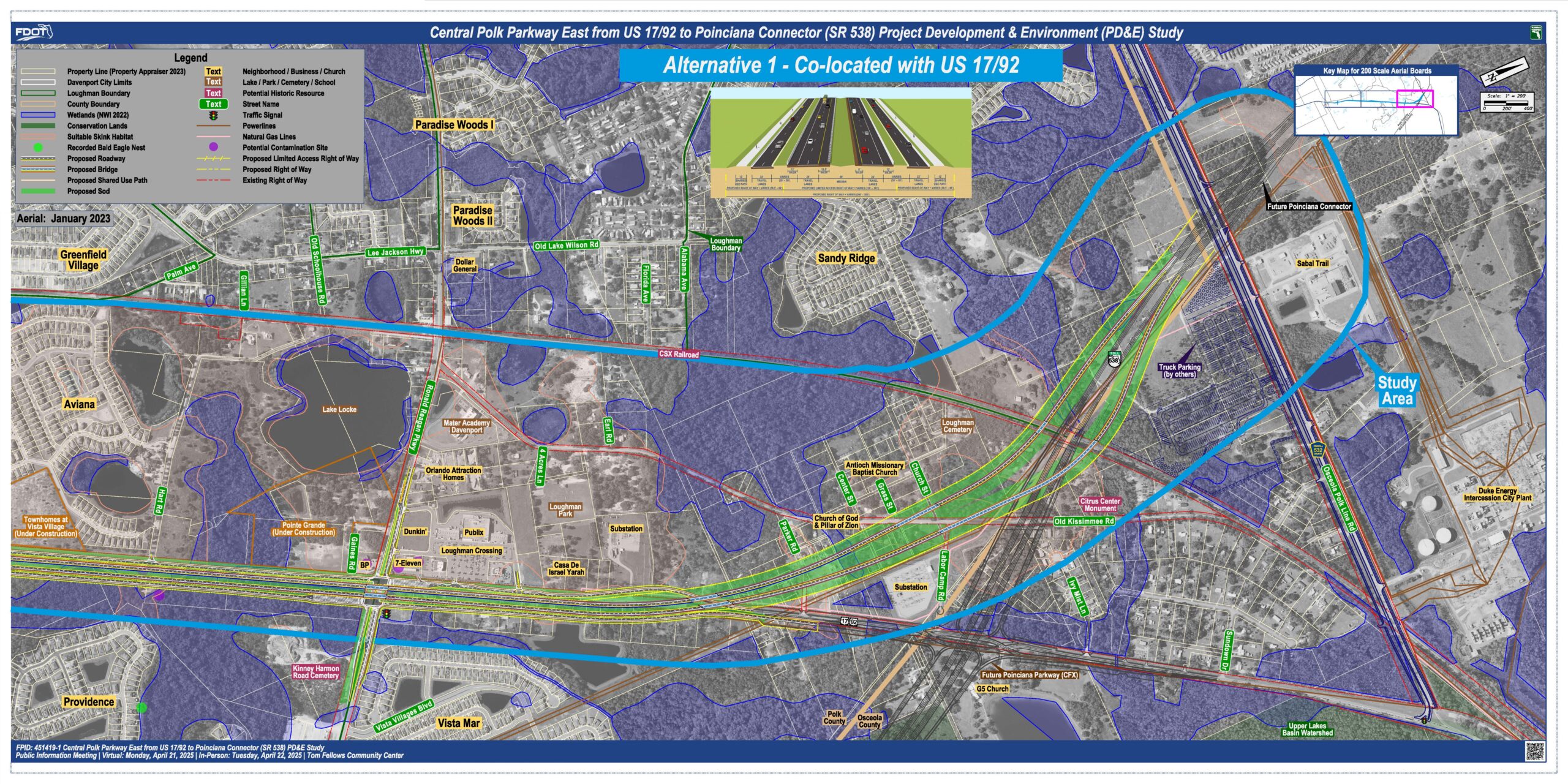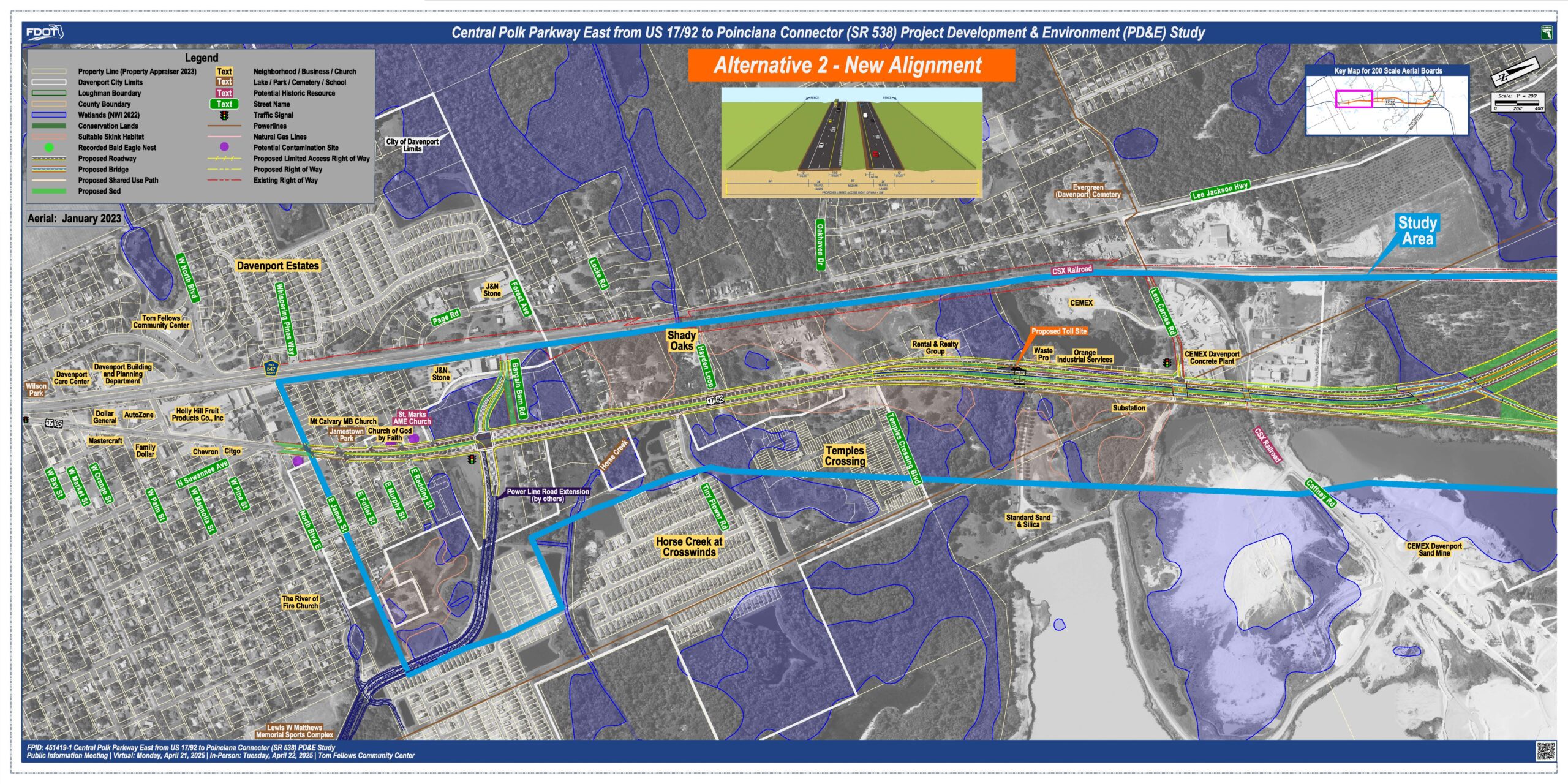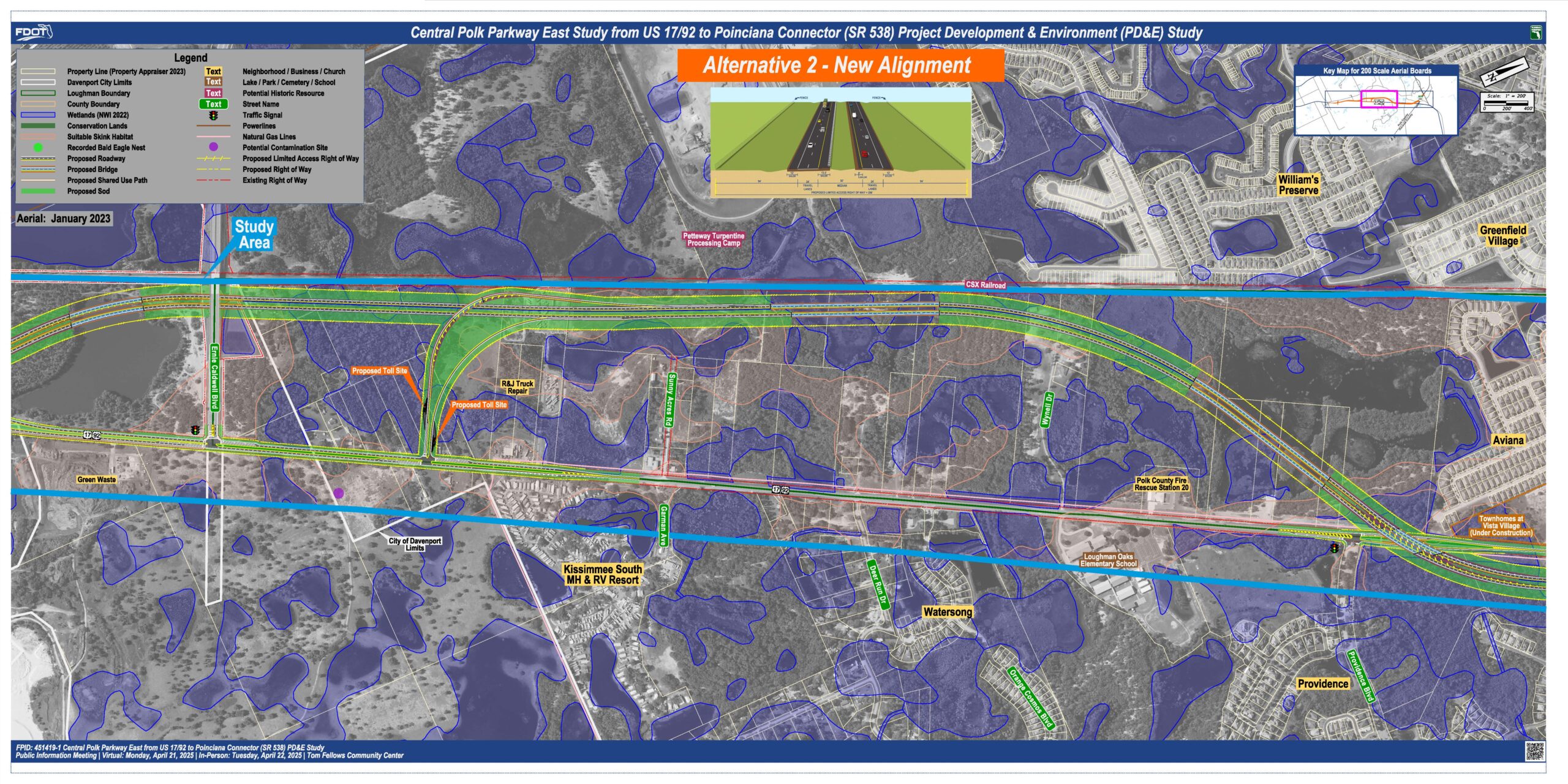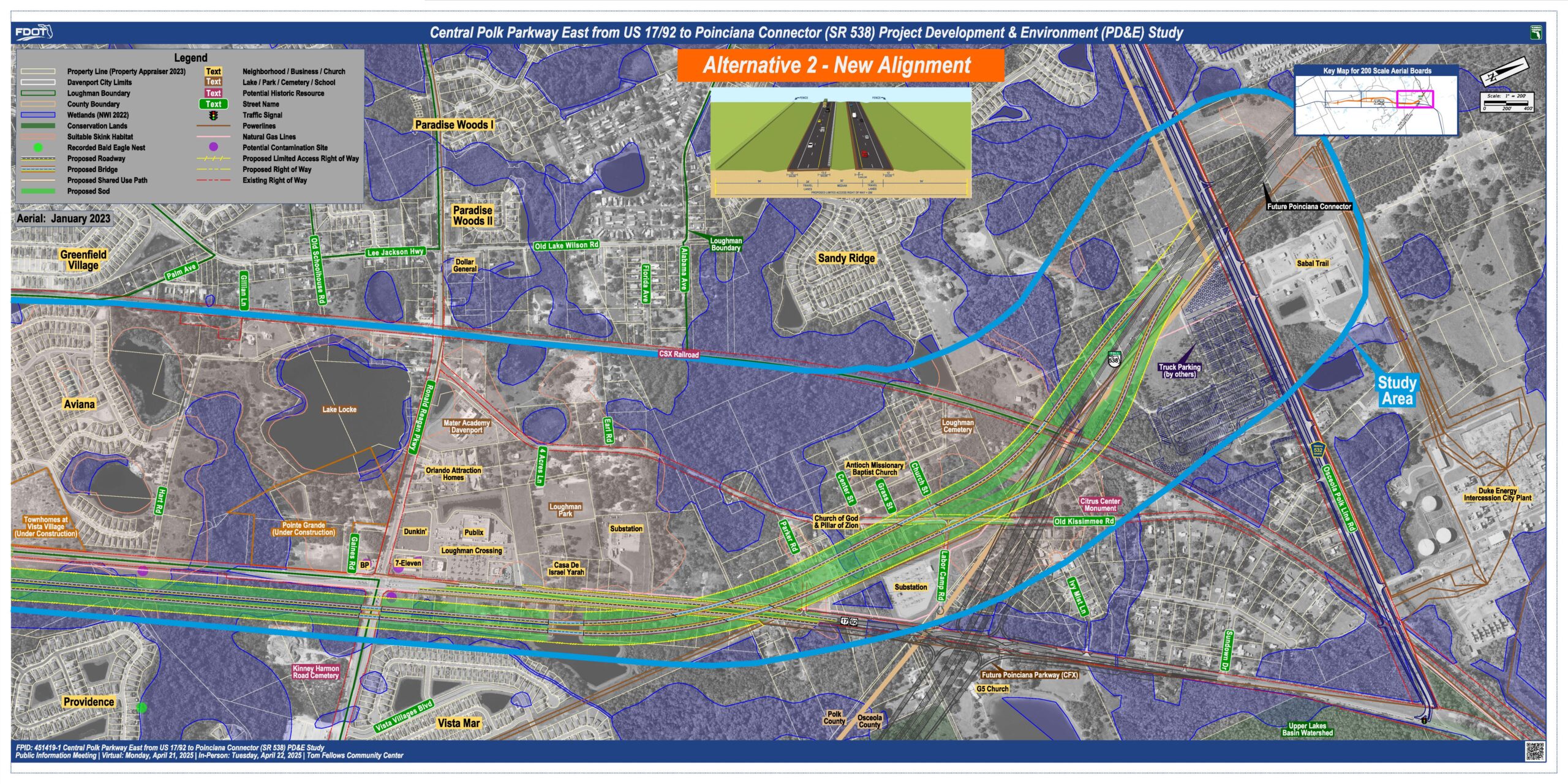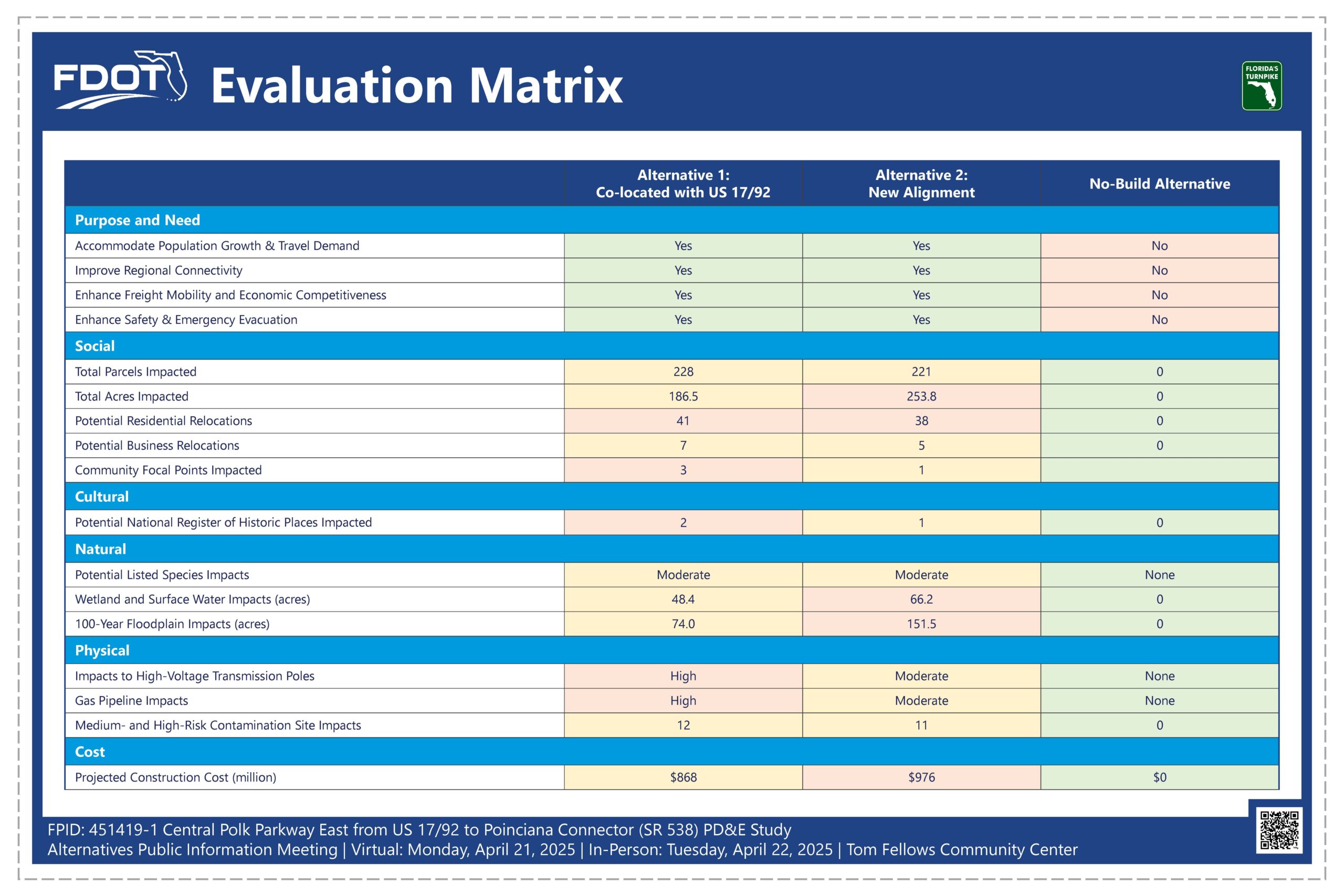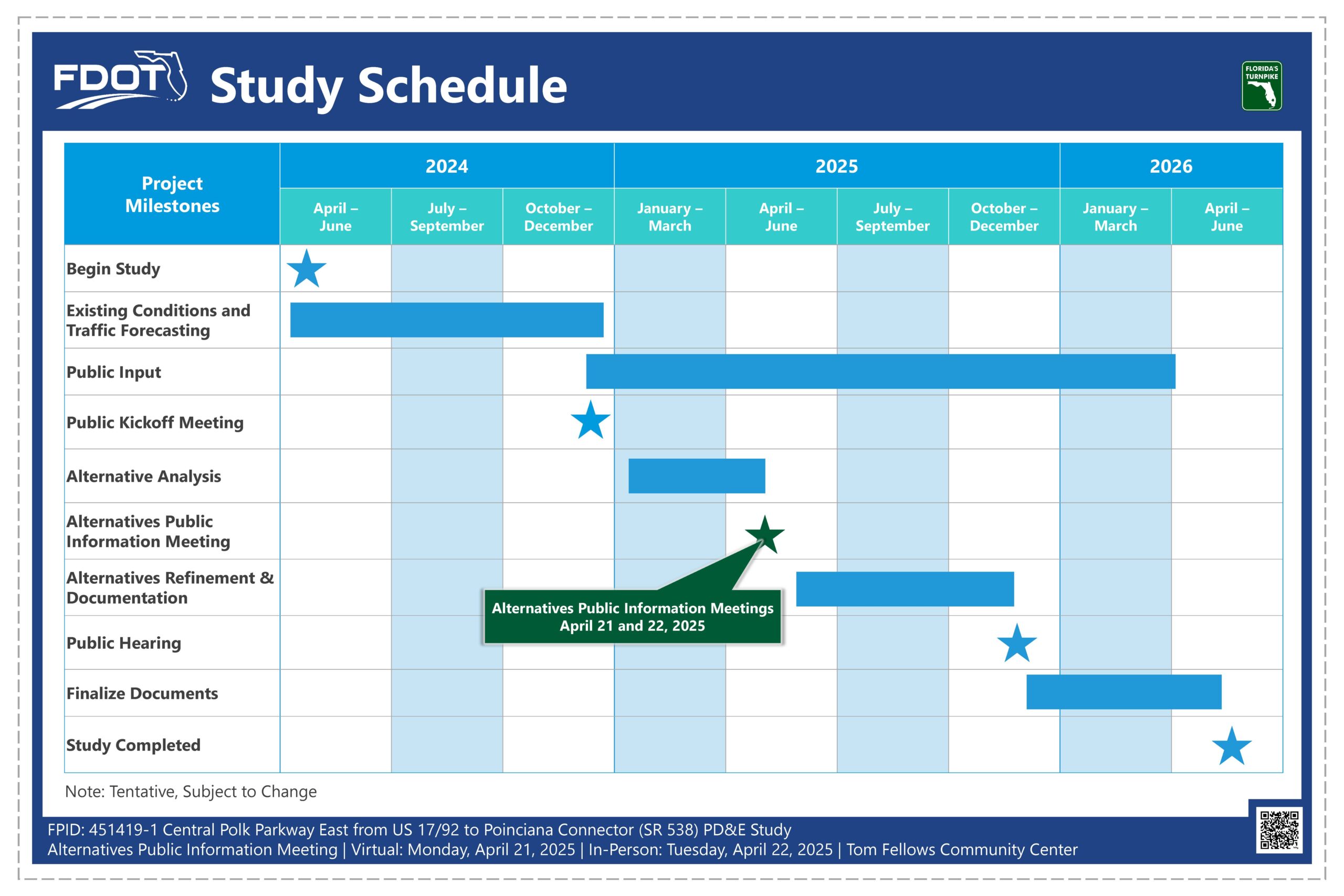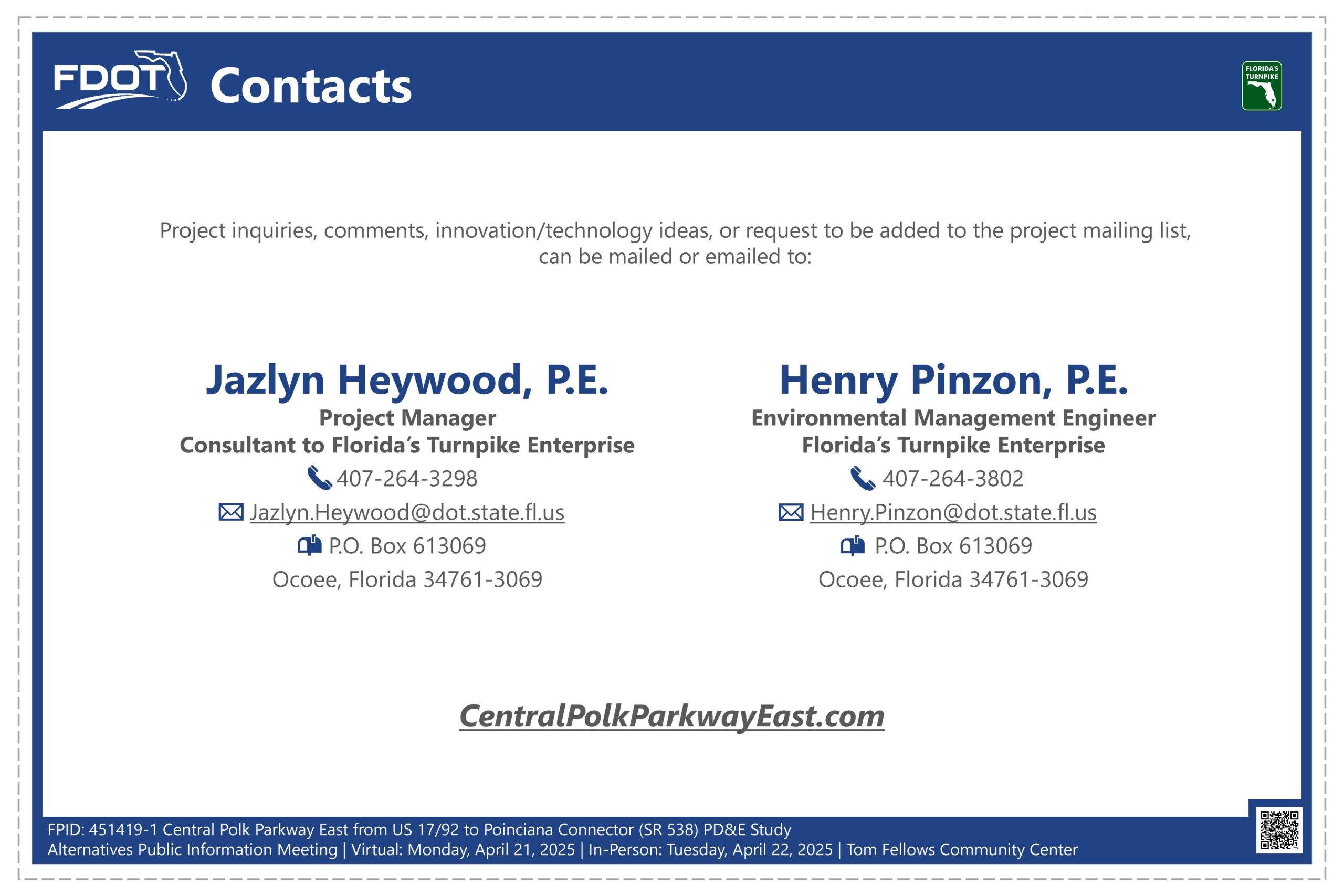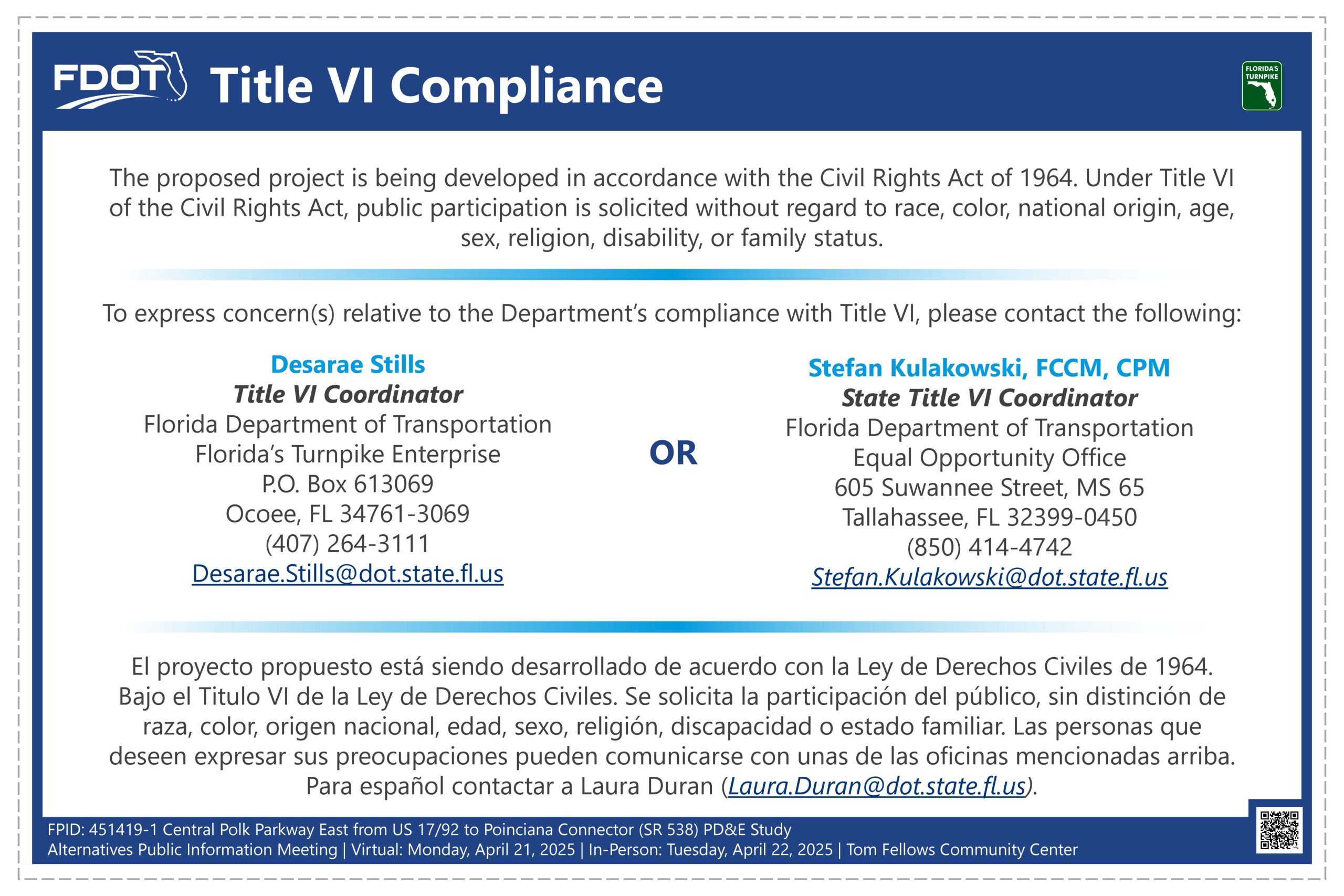A virtual public meeting was held for this project on Monday, April 21, 2025 at 6 p.m. An in-person public meeting was held on Tuesday, April 22, 2025 between 5:30 p.m. and 7:30 p.m. at the Tom Fellows Community Center located at 207 North Boulevard West in Davenport, FL.
- Public Meeting Video
- Project Development Process
- Project Location Map
- Purpose and Need
- Traffic Conditions
- Safety
- Typical Sections
- Alternative 1 – Sheet 1 of 3
- Alternative 1 – Sheet 2 of 3
- Alternative 1 – Sheet 3 of 3
- Alternative 2 – Sheet 1 of 3
- Alternative 2 – Sheet 2 of 3
- Alternative 2 – Sheet 3 of 3
- Evaluation Matrix
- Study Schedule
- Contact Information
- Title 6 Compliance
A PD&E Study is the second phase of FDOT’s Project Development Process. It determines the environmental effects associated with a proposed transportation project. Key components of a PD&E Study include an evaluation of existing conditions, identification of future traffic needs, alternatives development, and evaluation of the alternatives based on environmental and engineering factors. An important component of the PD&E process is public and agency involvement. All findings and recommendations are documented at the end of the study. If a build alternative is selected, then the project moves forward into the design phase.
The study area is located in northeast Polk County. The study limits begin on US 17/92, south of the Power Line Road Extension, and extend approximately seven miles northeast to the future Poinciana Connector, which is under design and will connect SR 538 to SR 429. The CSX rail line borders the study area on the west side.
The purpose and need for a project provides the basis for developing, considering, evaluating, and eliminating project alternatives. The need for the Central Polk Parkway East include accommodating population growth and the associated travel demands, improving regional connectivity and overall system linkage, enhancing freight mobility and economic competitiveness, and enhancing safety, emergency evacuation and response.
Increased travel demand within Polk County has led to congested roadways. Today, light, moderate or heavy congestion is regularly observed on several major regional roadways including Interstate 4, US 27 and US 17/92 during the peak travel periods.
The congested conditions on these major regional roadways will continue degrading if no improvements or alternative travel routes are constructed. Heavy traffic congestion is forecasted for Interstate 4, US 27, US 17/92, Lee Jackson Highway, and County Road 532 by the year 2050.
The proposed typical section for the Co-Located with US 17/92 Alternative (Alternative 1) features Central Polk Parkway East as a four-lane limited access highway. US 17/92 is reconstructed as a four-lane frontage road to maintain safe access to adjacent properties and serve local traffic circulation. Shared-use paths are provided along both sides of the project to safely accommodate bicyclists and pedestrians. The typical section for the New Alignment Alternative (Alternative 2) proposes a four-lane, limited access highway consisting of two 12-foot-wide travel lanes in each direction separated by a 50-foot wide median. Shoulders of varying widths are provided along the inside and outside travel lanes.
This exhibit shows Alternative 1, Segment 1, with north to the right. The project starts with upgrades to US 17/92 just north of James Street and continues to the north. The US 17/92 intersection with Power Line Road, which is currently under construction by Polk County, is upgraded to accommodate the higher traffic volumes and connect with the proposed realignment of Bargain Barn Road. Access to and from the proposed new highway occurs north of Power Line Road, after which the highway will be co-located with US 17/92. The highway lanes will be in the center with overpasses at select locations including Lem Carnes Road and the CSX railroad spur. Additional right of way will be required on both sides of US 17/92 to construct the proposed highway.
This exhibit shows Alternative 1, Segment 2, with north to the right. Segment 2 extends from south of Ernie Caldwell Blvd to north of Providence Blvd. The co-located highway continues north along US 17/92. In Segment 2, the highway bridges over Ernie Caldwell Boulevard, Deer Run Drive, Wynell Drive, and Providence Boulevard. US 17/92 will remain at grade. Additional right of way will be required on both sides of US 17/92 to construct the proposed highway and results in a displacement for the Polk County Fire Station.
This exhibit shows Alternative 1, Segment 3, with north to the right. Segment 3 extends from north of Providence Boulevard to the future Poinciana Connector. The co-located highway continues north along US 17/92. North of Ronald Reagan Parkway, the highway lanes separate from US 17/92. The northbound ramp provides a high-speed connection to the Poinciana Connector and ultimately SR 429 and Interstate 4. The southbound lanes provide a highspeed connection from the Poinciana Connector. The US 17/92 lanes will continue north, separate from the highway. This project ends on US 17/92 just before a future Poinciana Parkway interchange that will be completed by the Central Florida Expressway Authority. In Segment 3, the highway bridges over Ronald Reagan Parkway. Once the highway separates from US 17/92, the highway bridges over US 17/92, Old Kissimmee Road, the CSX railroad, and the future Poinciana Parkway. Additional right of way will be required in this segment of the project.
This exhibit shows Alternative 2, Segment 1, with north to the right. The proposed improvements would start on US 17/92, north of James Street and continue to the north along US 17/92. Bargain Barn Road would be realigned to join the Power Line Road intersection. Access to and from the proposed highway would occur north of Power Line Road, after which the highway would be collocated with US 17/92 for a short distance. This new alignment alternative separates the highway from US 17/92 north of Lem Carnes Road. The highway would bridge over Lem Carnes Road, the CSX railroad spur, the southbound US 17/92 lanes and wetlands. US 17/92 would remain at grade. Additional right of way will be required on both sides of US 17/92 to construct the proposed highway.
This exhibit shows Alternative 2, Segment 2, with north to the right. The proposed highway would continue in a northwest direction until it runs parallel to the CSX railroad. It would then cross back to the east of US 17/92 north of Providence Blvd. Access to and from the highway is provided north of Ernie Caldwell Blvd. Interchange ramps will serve northbound-on and southbound off access, and US 17/92 would be widened to two lanes in each direction north of the interchange ramps. Improvements to US 17/92 to accommodate bridge piers as the highway crosses over US 17/92 would be required at Providence Blvd. The remainder of US 17/92 in Segment 2 will remain in the existing condition. This Alternative does not impact Loughman Oaks Elementary School or the Polk County fire station. The highway will bridge over water bodies, wetlands, and US 17/92. The improvements along US 17/92 at Providence Blvd. Will not change the access. Drivers will still be able to turn left into and out of the Providence community. Additional right of way will be required for this segment.
This exhibit shows Alternative 2, Segment 3, with north to the right. The proposed highway continues separate to US 17/92 to Poinciana Parkway. North of Ronald Reagan Parkway, US 17/92 is widened to two travel lanes in each direction. This project ends on US 17/92 just before a future Poinciana Parkway interchange that will be completed by the Central Florida Expressway Authority. The proposed highway will be on a new alignment requiring additional right of way separate to US 17/92 and bridge over Ronald Reagan Parkway, a water body, US 17/92, Old Kissimmee Road, the CSX railroad, and the future Poinciana Parkway.
This evaluation matrix presents the potential impacts and costs associated with each alternative. While the Build Alternatives meet the project purpose and need, they will result in impacts to study area features. Although the No-Build Alternative does not require impacts to any study area features or require substantial funding commitments, it does not meet the project purpose and need.
This project is being developed in accordance with the Civil Rights Act of 1964. Under Title 6 of the Civil Rights Act, public participation is solicited without regard to race, color, national origin, age, sex, religion, disability, or family status. Please contact one of the Title 6 coordinators shown here to express any concerns regarding Florida Turnpike’s compliance with Title 6.

